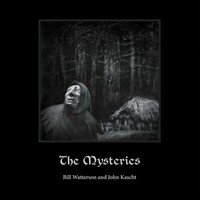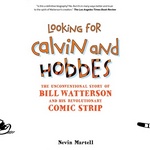 The Mysteries
The Mysteries
by Bill Watterson and John Kascht
DETAILS: Publisher: Andrews McMeel Publishing Publication Date: October 10, 2023 Format: Hardcover Length: 72 pgs. Read Date: October 31, 2024

What’s The Mysteries About?
Here’s the Publisher’s Description, if I try, I’m going to end up telling the whole, brief story:
In a fable for grown-ups by cartoonist Bill Watterson, a long-ago kingdom is afflicted with unexplainable calamities. Hoping to end the torment, the king dispatches his knights to discover the source of the mysterious events. Years later, a single battered knight returns.
I’m not going to say more, even though I think we could use a teensy-weensy expansion to really sell the story. But the story isn’t the important part because…
WOW. The Art!
This is why you pick up this book. Period. You’re curious about what Watterson’s been up to for the last umpteen years, how his art has changed and developed. What’s got his attention? And we won’t really know much given how short this book is and how atypical it is, but still, that curiosity is there.
Maybe you know John Kascht’s work and want to see what he’s been dabbling in.
Either way, this is why you come to this book—and you will be well rewarded for it.
I’m not going to try to explain how these black-and-white images capture so much—and yet, leave so much to the imagination. But I’ve already gone through this book a few times just to see the art without caring about the words (which, yeah, I’ve read twice—but not as often). There are a couple of samples here.
Here’s a video put out by the publisher where the two artists describe how they worked together (and no, you don’t get to see any faces. Just hands and the works in progress).
So, what did I think about The Mysteries?
Honestly, the story doesn’t do much for me. It’s fine—good enough to justify your time, but that’s it. It feels like the first 50-70% of a Neil Gaiman story (but told in far fewer words). Honestly, anyone who described something like that to me would be enough to get me to pick it up—but I wanted a little more from Watterson.
But the more I think about it, I’m always going to want more from Watterson than he seems willing to give. So I should shut up and be happy about it.
I cannot say enough good things about these images, though—the visual look of the book as a whole, either. I’m so glad I got this just for that experience. And it’s an experience I can repeat frequently.
I’m not going to give this a rating, because…I don’t know. I can’t assign a number to this. I’m just happy to see that Watterson is still out there doing creative things and hope he decides to share some more in the years to come.
This post contains an affiliate link. If you purchase from it, I will get a small commission at no additional cost to you. As always, the opinions expressed are my own.
![]()




 Nevin Martell, like just about everyone who ever read him, is a Calvin and Hobbes fan — what’s more, he discovered the strip at the right age and was able to appreciate it as only a child can — without being self-conscious about reading a comic strip and with devotion. Years later, when trying to write something more meaningful to him than another book about a pop star, he decides to write about that strip and its reclusive creator.
Nevin Martell, like just about everyone who ever read him, is a Calvin and Hobbes fan — what’s more, he discovered the strip at the right age and was able to appreciate it as only a child can — without being self-conscious about reading a comic strip and with devotion. Years later, when trying to write something more meaningful to him than another book about a pop star, he decides to write about that strip and its reclusive creator.
